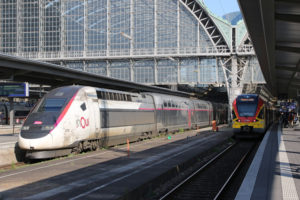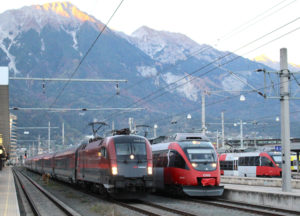BERLIN — The countries of the European Union have supported a proposal made by the German government to recreate the “Trans Europe Express” (TEE) system of international trains, which in the 1950s to 1970s represented the best and most luxurious international trains in Western Europe.

Firstly, the distances to be covered and number of countries to be included are much greater than the original TEE network, which was focussed on western Europe. Second, rather than offering luxury travel, the new TEE2.0 would offer high speed services for large numbers of passengers rather than a select few in First Class. Finally, a network of overnight trains is planned alongside the daytime high speed services.
The proposed new network is made possible by the modern and modernised rail network in Europe. Billions of dollars have been invested in the European rail network since the 1980s with high speed networks in several countries and — sometimes funded by the European Union — high speed lines connecting countries and their domestic networks. In the Alpine region between northern and southern Europe, several new Base Tunnels have already opened, mainly in Switzerland, cutting journey times significantly; more are under construction in Austria, France, and Italy. These will further reduce journey times when opened in the next decade. Between Germany and Denmark, a new undersea tunnel is being built which, when open in 2028, will reduce journey times between Danish and German cities [see “Digest: Huron Central, preparing for shutdown …,” Trains News Wire, Nov. 4, 2020]. This, combined with the Øresund bridge connecting Sweden and Denmark, in use since 2000, will also make direct services to Swedish cities possible.

The proposals suggest routes that could be established in the short term, plus those that will require new infrastructure. A new international operating company, jointly owned by participating government-owned rail companies, has been proposed to operate the services. Initially, at least, they would use existing equipment such as the French TGV, German ICE, or Italian Frecciarossa high speed trains. It is not clear what role, if any, there will be for privately owned passenger rail operators now active in many European countries.
The first routes would bring together existing services — for example, combining Amsterdam-Paris and Paris-Barcelona services to offer a through service from Amsterdam to Barcelona via France. Other “short term” routes, which could be operational within two to three years, mostly created by combining existing services, are:
— Brussels-Berlin- Warsaw;
— Rome-Zürich-Frankfurt-Amsterdam;
— Barcelona-Lyon-Frankfurt-Berlin.
Longer term, the expanded network of TEE2.0 daytime connections will be made possible by new infrastructure to open in the next decade, including Stockholm and Copenhagen to both Paris and Munich, plus Rome-Berlin and Paris-Budapest. End-to-end journey times of 12-15 hours would be possible by rail. However, since most of these journeys can be made in a 2-3 hour direct flight, it seems likely most passengers would travel only part of each route, as several major cities are connected by each proposed service.
Overnight trains too
The TEE2.0 plans also include proposals for a new overnight train network that would offer ‘high quality’ sleeper/couchette trains on multiple lengthy routes such as Paris-Warsaw, Berlin-Rome, or Frankfurt-Barcelona in the short term (likely to not be before 2025). In the longer term, after completion of the Fehmarnbelt tunnel between Denmark and Germany in 2028, Stockholm-Paris/Amsterdam and Stockholm-Vienna service could be added. Not clear is how such services would be funded, as many long-distance European overnight routes have previously closed due to lack of profitability.
Many international overnight services in Europe already operate under the Austrian Railways (ÖBB) “Nightjet” brand name, with a new Amsterdam-Vienna route scheduled to begin in December. Some of these services receive government funding in Austria or the Netherlands. Private companies already offer some overnight services on a for-profit basis. French company Transdev, operating in Sweden as “Snälltåget,” plan to offer Stockholm-to-Berlin overnight trains from 2021. RDC Deutschland, owned by the US-based Rail Development Corp, operates from Germany to Austria.
The proposals have been greeted positively by transport officials from EU member countries and some state rail companies. Whether a 12-plus hour high speed train journey really will replace a 2-3 hour flight remains to be seen.













